Mississippian is a cultural complex which spread from its hearth on the Mississippi River in Illinois throughout much of the Southeast. The most spectacular characteristic of Mississippian material culture is the construction of earthen pyramids. The pyramids, usually called mounds, have a flat top which provided a space for a ceremonial building or a chiefly residence. Access to the top of the pyramid was made possible by a ramp or stairs up one side.

About a thousand years ago-approximately 1000 CE-Mississippian people established the site of Etowah in Georgia. This became a dominant regional center with massive earthen platform mounds, elaborate ritual objects, and an extensive trading network. Etowah was a planned community made possible by a productive maize-based agriculture. Archaeologists have determined that at least 140 buildings were constructed at the site. Politically, Etowah was a chiefdom with a hierarchical social organization.
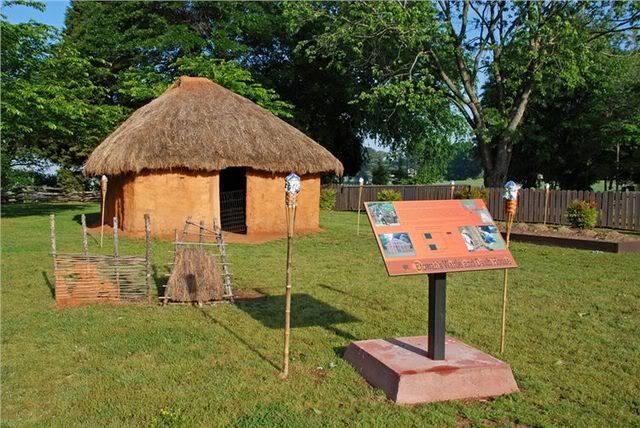
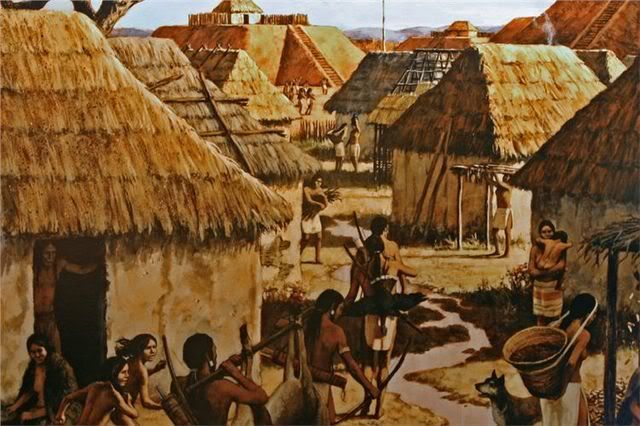
Reconstruction of a house at Etowah is shown above.
One of the primary characteristics of Mississippian sites is the earthen mounds or pyramids: At Etowah there are three main platform mounds and three smaller mounds. The largest of these mounds, Mound A (sometimes called the Temple Mound) stands 19 meters (63 feet) in height and covers about three acres at its base. The construction of this mound began early in the site’s history and it continued to be expanded and reconstructed over the next several centuries. There is some archaeological evidence that ritual feasting accompanied the building and rebuilding of the mound.
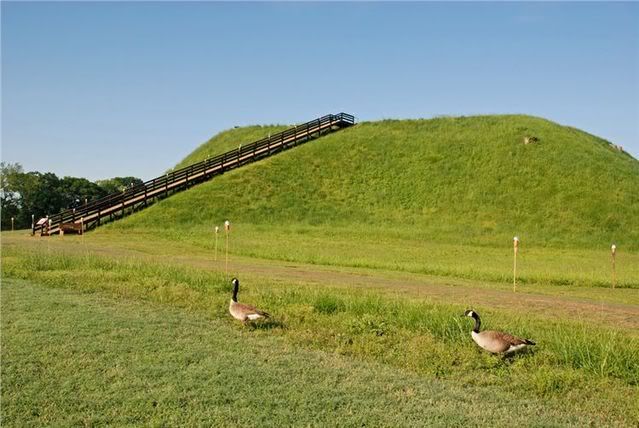
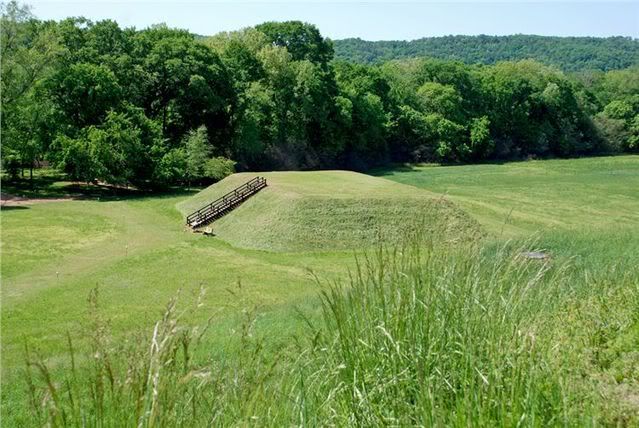
The summit of Mound A contained a complex of Mississippian buildings separated by open spaces. Some of these buildings were screened from public view. The largest of these buildings was 18 meters on a side. The screening of the sacred space on top of Mound A may be an indication that spiritual power was not egalitarian, but reserved for an elite group. Access to this power was controlled.
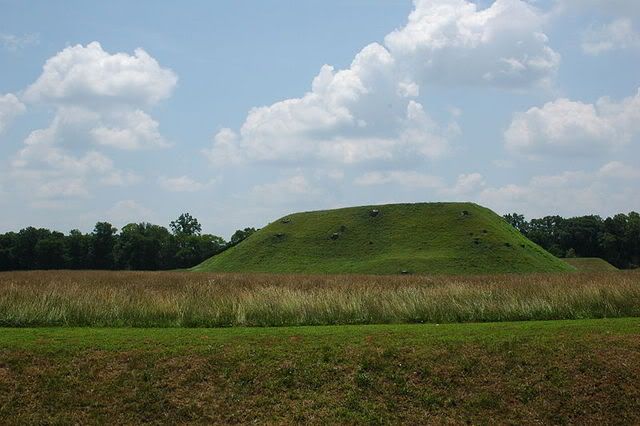
Mound A is shown above.
The earthen ramp on the front of Mound A originally had clay steps. Logs were placed on the tread of each stair. The original staircase was about 17 feet wide.
Mound B is 25 feet (7.6 meters) high while Mound C, rises to just 10 feet (3.0 meters). Mound C was created as an elite mortuary facility which emphasized the genealogical links of certain subgroups in the society.
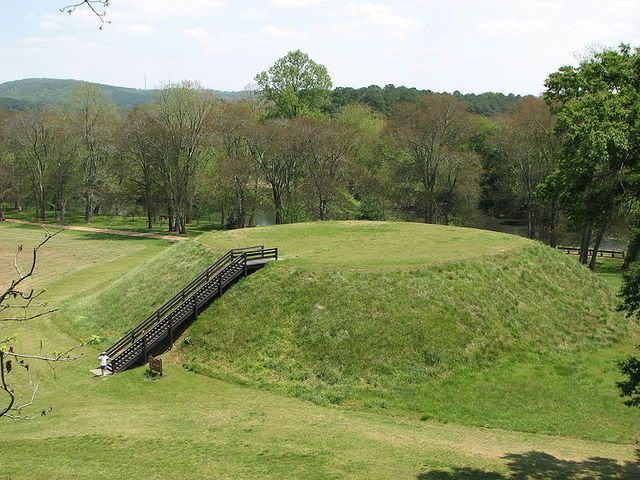
Mound B is shown above.
Adjacent to the mounds, the Mississippian occupants of Etowah constructed a raised ceremonial plaza. This was used for ceremonies, as well as for chunkey games (which were often ceremonial in nature), and as a commercial trading area.
Some evidence of warfare or conflict can be seen in the fortification system which surrounded the town. There was both a palisade and a moat. The moat was 9 to 10 feet (2.7 to 3.0 meters) deep. The moat also functioned as a drainage system during major floods.
The palisade was built using logs. As with other Mississippian sites, the palisade was constructed by first digging a ditch and then standing logs into it. Finally it was backfilled to support the wall. The wall would have been about 12 feet (3.7 meters) high. About every 80 feet (24 meters) there were guard towers for archers.
One of the distinctive features of Mississippian culture and iconography were the distinctive paint palettes (sometimes called sun disks) which were found at Etowah. These were locally made ritual paraphernalia which were kept in sacred bundles. The palettes were generally round, about 23-33 centimeters in diameter and 2.5 centimeters thick, and made from a greenish-gray rock. All of the palettes were decorated in a similar fashion: a scalloped, notched, or rayed edge and a band of one to four lines incised on the top of the rim. These were common decorative themes in Mississippian art.
The palettes were used to mix kaolinite (a clay mineral that is pure white in color), calcite (a whitish powder obtained from burned mussel shells), hematite (a mineral known for its bright red color), graphite (a black pigment), galena (a crystalline lead ore with a shiny, silvery appearance), and resin (a yellow-brown material that was used as a liquid).
With regard to art, archaeologists have found numerous clay figurines and ten stone statues at Etowah. Some of these are paired in which there is a man seated cross-legged and a woman kneeling. The females are wearing wrap-around skirts. Both figures have elaborate hair styles. Some people interpret these figures as representing lineage founders. The stone effigies can weigh up to 125 pounds.
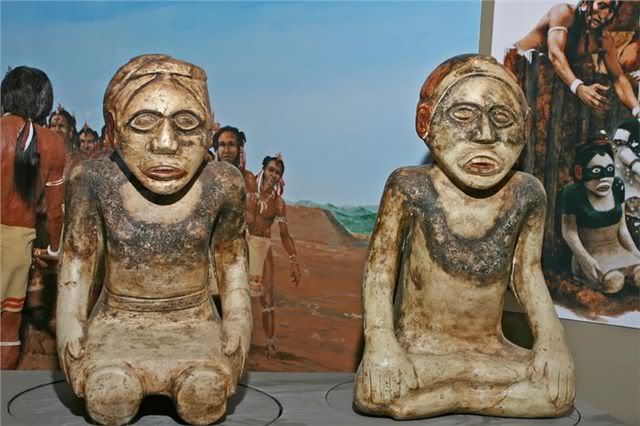
Etowah was abandoned about 1200 and then re-occupied just before 1300. The re-establishment of the Etowah chiefdom involved an introduction of a foreign symbol set. This included a set of copper plates depicting the Birdman. The Birdman is a decorative style and religious theme whose home probably lies at Cahokia.
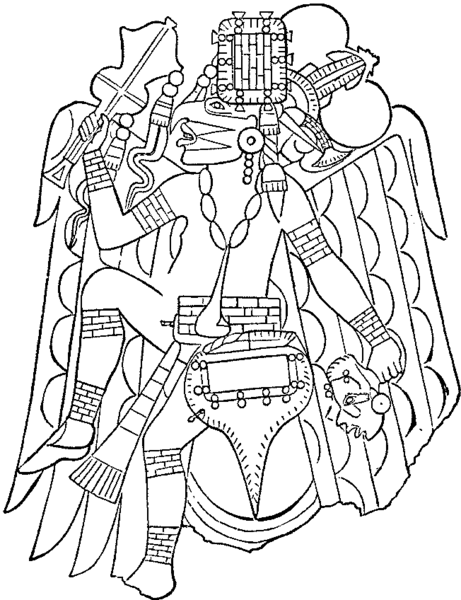
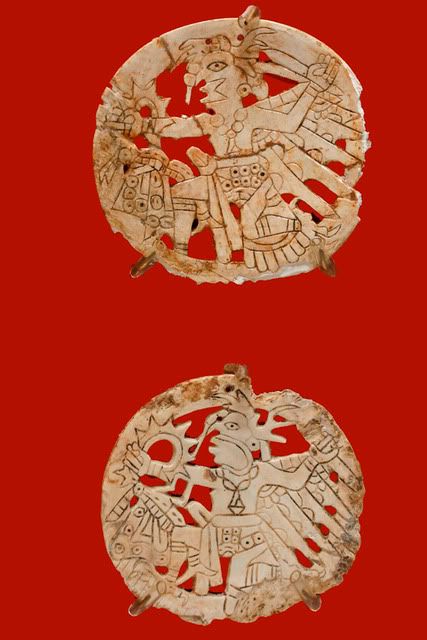
The peak of building and occupation at Etowah appears to have been from 1325 to about 1375. About 1325, a residential ruler’s compound was constructed on top of Mound A . The compound included four large buildings, including one 3,000-square-foot structure.
The first scientific archaeology at Etowah was carried out in the 1880s by the Bureau of American Ethnology of the Smithsonian Institution. In the 1920s, excavations were carried out by Phillips Academy of Andover, Massachusetts. Many of the artifacts were distributed to various museums throughout the United States. Both the U.S. National Museum and the Museum of the American Indian, Heye Foundation, New York, have exhibits of artifacts from Etowah.
In 1953, the Etowah site was purchased by the Georgia Historical Commission. In 1965, the Etowah Mounds Archaeological Area was designated as a National Historic landmark by the Department of the Interior and is considered the most intact Mississippian culture site in the Southeast. The site is considered to be ancestral to the Creek people. Today the Etowah Indian Mounds Historic Site is managed by the Georgia Department of Natural Resources. The current park covers 54 acres.

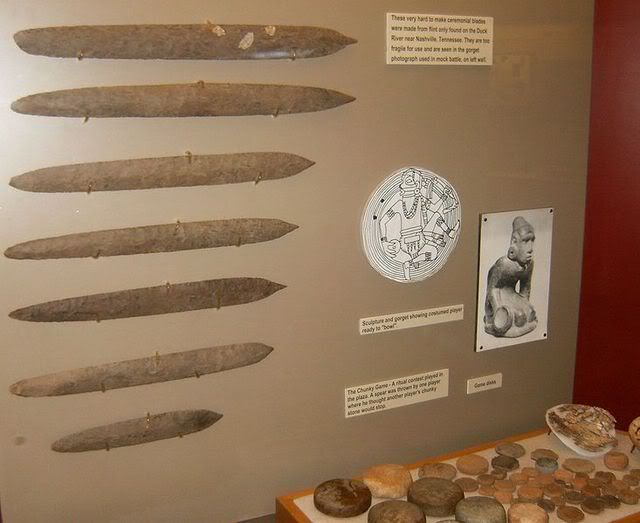
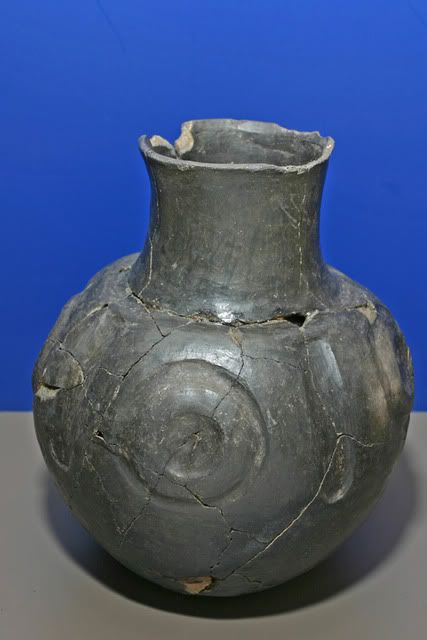
The museum and some museum displays are shown above.
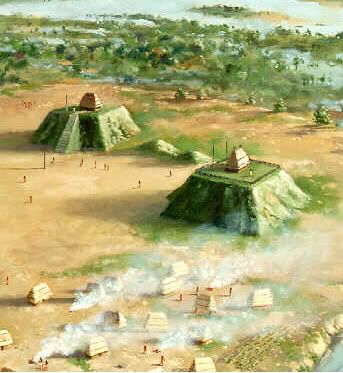
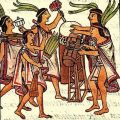
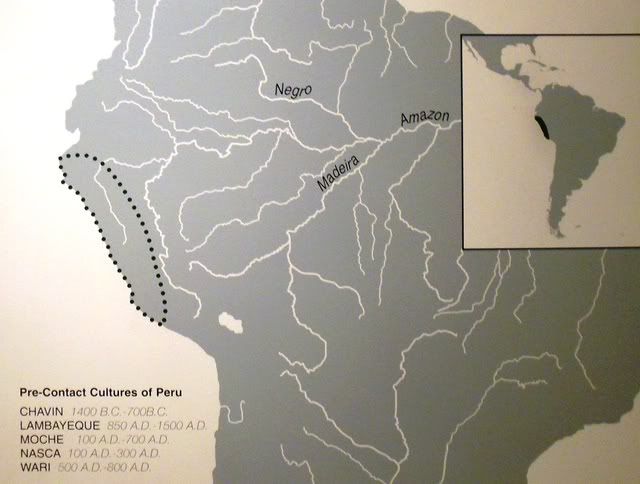
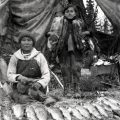
Leave a Reply